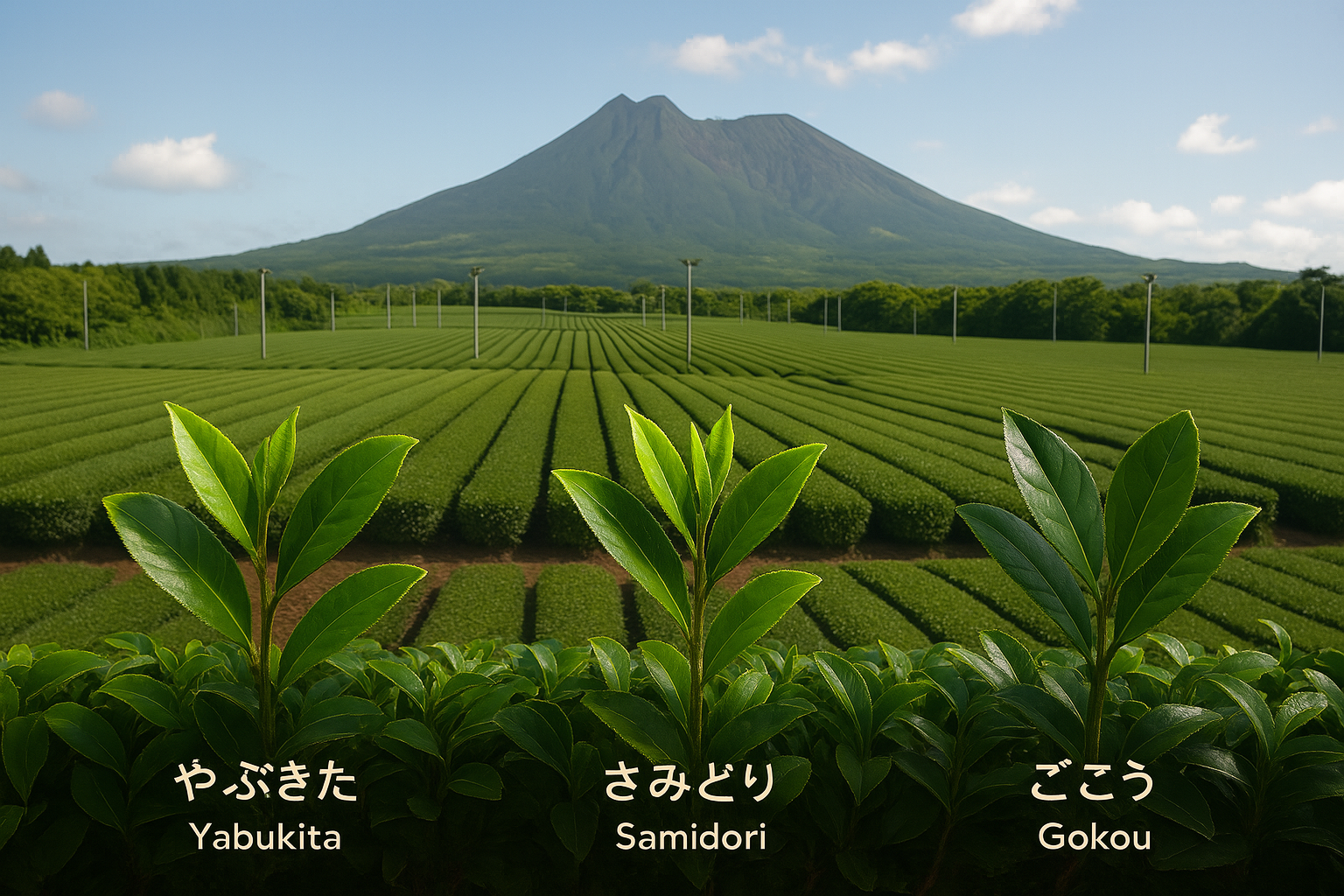Ever noticed how some matcha tastes sweet and creamy while others might be vegetal? Or how some high quality matcha powders are deep green while others lean brighter green?
The answer often lies in a single word: cultivar.
Don’t worry if you haven’t heard this term before — let’s break it down for you.
What Is a Tea Cultivar?
A cultivar (short for cultivated variety) is simply a type of tea plant. Just like there are different types of mangoes or apples (Alphonso, Dasheri, Fuji, etc.), there are different varieties of tea plants — and each one has a different flavor, aroma, and color.
Japan has developed over 100 cultivars for green tea. Some grow better in cooler climates, others in warmer ones. Some taste sweeter, while others are more vegetal or bold. These cultivars are what give matcha its unique character, far beyond just the region it's grown in.
Why Do Cultivars Matter in Matcha?
Each cultivar affects how your matcha tastes, smells, looks — and even how it feels in your mouth.
Flavor: Some cultivars are known for their deep umami, others for their mild sweetness or a hint of astringency.
Color: The shade of green in your matcha is influenced by the plant’s genetics and how it was shaded and processed.
Texture: Certain cultivars result in a creamier whisked matcha, while others may feel lighter or earthier.
Aroma: From nutty to floral to marine — each cultivar has its own aromatic notes.
When you enjoy a cup of matcha, you're tasting not just a place — but a plant’s personality.
Our Matcha Comes from Kagoshima — A Region Known for Innovation
We proudly source our teas from Kagoshima, a region in southern Japan with rich volcanic soil, mild weather, and forward-thinking tea farmers.
Kagoshima’s climate is ideal for growing shaded tea, and many cultivars that were once only grown in central Japan are now thriving even better here — including Samidori and Okumidori.
A Closer Look at Popular Japanese Matcha Cultivars
Each of these cultivars brings something different to the table. None is better than the other — they’re simply different expressions of the same beautiful plant.
Yabukita (やぶきた)
Taste: Fresh, lightly astringent, well-balanced
Color: Bright green
Yabukita is the most widely cultivated tea variety in Japan, accounting for over 70% of tea plantations. It offers a balanced, approachable flavor profile that many people recognize — fresh, slightly grassy, with mild bitterness and a clean finish. Its adaptability and consistent taste make it a reliable base for both matcha and sencha.
Okumidori (おくみどり)
Taste: Mild, smooth, low astringency
Color: Vivid green
Okumidori is often used to round out blends with a mellow, smooth taste and beautiful green hue. It’s a later-budding cultivar, which means it naturally avoids early spring frost. It contributes depth and creaminess to matcha, without adding much bitterness. On its own or in blends, Okumidori is appreciated for its easy-drinking character.
Samidori (さみどり)
Taste: Rich, round, with soft umami
Color: Bright, vibrant green
Originally developed in Uji, Kyoto, Samidori is now successfully grown in other parts of Japan — including Kagoshima. Known for its refined, gentle umami and vibrant color, it brings a softness to matcha with a slightly floral or nutty aroma depending on the growing conditions.
Gokou (ごこう)
Taste: Deep, layered, slightly earthy
Color: Rich green
Gokou is a cultivar that often delivers a bold character — not overpowering, but unmistakably full-bodied. With a deeper umami profile and rich, layered taste, it’s often used when a more intense matcha experience is desired. Its dense aroma and complex texture make it popular among those who appreciate a fuller, richer tea — whether as a standalone cultivar or part of a balanced blend.
Why Matcha Is Often a Blend
You might be wondering — if all these cultivars are so unique, why do many matchas blend them?
That’s actually a good thing. Blending:
- Creates a balanced taste that’s consistent from batch to batch
- Allows tea makers to highlight the strengths of each cultivar
- Lets producers adjust for seasonal changes and weather impacts
Final Sip: Understanding Cultivars Deepens the Matcha Experience
You don’t need to memorize cultivar names or become a tea expert to enjoy matcha. But knowing what a cultivar is — and how it shapes the flavor in your cup — brings you one step closer to the source.
Each cultivar is a voice, and each blend is a conversation between those voices.
At Mezame, we’re proud to craft matcha from the fertile fields of Kagoshima, using cultivars like Yabukita and Samidori to offer matcha that’s not just high quality — but full of character.

0 comments